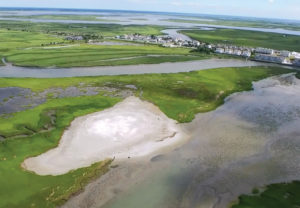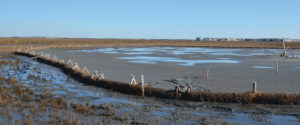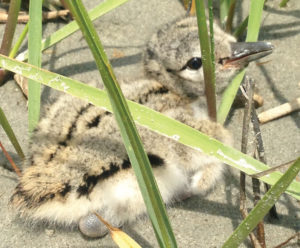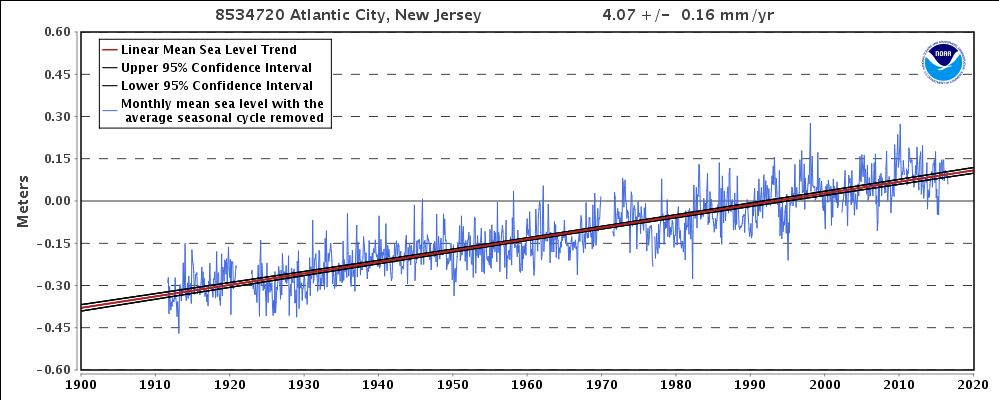Can Dredge Materials be Beneficial to Marshes?
by Lenore Tedesco, Executive Director

Ring Island wildlife habitat creation
Recently, there has been a lot of talk about opportunities to utilize dredge materials for environmental benefit, especially to help restore wetlands. Scientists at the Institute have been working to understand how rising sea level and climate change is affecting our local marshes and the wildlife that depend on them. We are also working on teams to understand how dredge materials can be used to restore degraded marshes or provide nesting habitat for marsh dependent species as habitat becomes lost.
Sea level is rising and has been for quite some time. If you drive across the causeways, you have probably noticed how frequently the marsh is now flooded. In our area, sea level has risen more than 6” since 1980 and an important question that we are studying is how this rise in sea level may be impacting the health and sustainability of our marshes. Marsh grasses grow well over a very narrow range of water depth and during times of slowly rising sea level, can do quite well and “keep up” with rising water levels by building dense root structures and trapping storm transported mud and sand. If sea level rises too fast though, marshes can begin to drown and shift to open water areas or mudflats.

Avalon thin layer placement area
In areas where marshes are falling behind rising sea level, a technique called thin-layer placement (TLP) may be a suitable marsh restoration technique. TLP works under the presumption that clean dredge material can be spread on the marsh in a layer thin enough to allow marsh grasses to regrow, while raising the marsh elevation to offset elevation losses due to rising sea level. This sounds promising, but is actually quite difficult and challenging to accomplish, and great care must be taken to not damage the marsh more than help it. For these reasons, it’s important the TLP be applied only as a marsh restoration technique – and not as a way to dispose of dredge material.

American Oystercatcher chick on Ring Island
A second type of beneficial reuse for dredge material involves the creation of wildlife habitat. This habitat creation involves the loss of the original habitat and may involve conversion of wetland to sandy upland or bay bottom to intertidal areas. There are pros and cons to all of these approaches.
Our area has been a focus of pilot projects for beneficial reuse with two project areas in “our backyard”. Working with the Army Corp of Engineers, New Jersey Department of Environmental Protection, Nature Conservancy, and others, an area of Ring Island was treated with a thin-layer placement and also a habitat creation area in August, 2015. This winter, a larger area of thin-layer placement was tested behind Avalon. Scientists are learning the best practices, documenting the unforeseen challenges, and working to understand how and where these techniques can be applied to benefit the marshes. There is a lot to learn before this technique can be effectively utilized so as stewards of the wetlands, our staff are working to learn as much as we can and provide guidance to decision-makers about how marshes can benefit from these new techniques.

Measured sea level from tide station in Atlantic City (1900 – present) from NOAA
